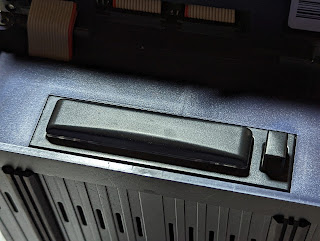One of the main problems with older DSLR cameras is the highly compressed shooting format.
For example my Canon 550d records H264 with a bit rate of around 45mbps which gives a good quality image but such high compression gives very little room for adjustment in post.
My Sony a5100 offers a slightly higher bit rate with its XAVC format offering 50mbps but shooting in that format for prolonged periods does tend to overheat the camera.
Modern cameras like the BMPCC record in Apple ProRes or DNG RAW for the best quality, but obviously they also cost a lot more.
This is where the Atomos Ninja comes in. First released in 2012 the Ninja is a portable lcd monitor and hard drive recorder which records an HDMI input as ProRes up to 147mbps.
When first released the Ninja cost over £900 and was pitched at professionals looking to add tapeless recording to HDV cameras.
Ten years later the Atomos range has gone through a lot of changes and five versions of the Ninja adding a lot more functionality and recording options. The original version of the Ninja can be found very cheaply on eBay.
I picked this one up very cheaply and it came complete with original carry case and a selection of hard drives and ssd drives.
The recorder itself is very compact, measuring 4.5 x3.5 inches, and it is small enough to mount directly on top of the camera using a monitor swivel foot.
The system uses standard 2.5inch hard drives or SSD’s which are mounted in plastic caddies and slotted into the left side of the device. Footage is downloaded using the usb hard drive dock provided.
Power for the recorder comes from standard Sony NP batteries, with two battery slots on the back of the recorder allowing for hot swap during recording which gives potentially unlimited recording times on location.
Control is via touch screen controls and the menus and buttons are very clear and easy to use. The touch screen itself is not overly sensitive so it needs a good ‘press’ and hold on the screen in order to activate the buttons. It’s not possible to accidentally brush against the screen and stop recording.
The screen is very bright, much brighter than the standard screen on a DSLR and it’s very easy to view even in bright daylight conditions.
If you use spinning hard drives rather than SSD then the recorder does give a very slight gyroscope effect that makes handheld operation a little strange.
The recorder requires a clean HDMI signal to work, so you will need to make sure your camera either includes clean HDMI out or can run Magic Lantern to obtain a clean signal.
The ProRes recording format gives larger file sizes than the H264 on my Canon with a 250gb hard drive storing about 3 hours of footage at the highest ProRes 422 quality. However the jump in quality is really impressive when viewed against the in-camera recording.
ProRes gives a lot more flexibility for post processing. The footage can be pushed further in brightness without showing as much grain as the standard XAVC recordings on the Sony and for the Canon the footage is a huge improvement. The original Canon H264 footage shows a lot of compression, especially in shadow areas but the ProRes 422 HQ files are almost noise free by comparison.
So if you are looking for a budget recording option that gives professional quality footage even from a budget camera, then the original Atomos Ninja is definitely worth trying out.















